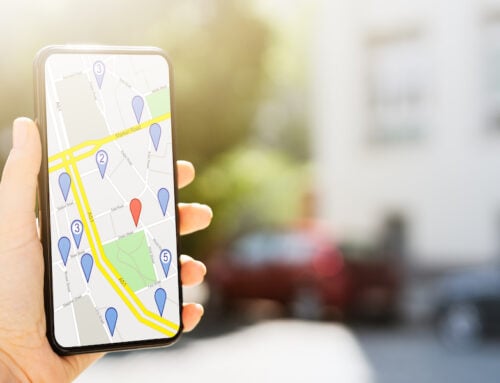SEO, or search engine optimization, is the practice of ensuring that your digital media content can be found easily by search engine users and consumers. Consider that you own an online store that sells fitness clothing and running shoes in Northern Georgia. If someone were to search the phrase “fitness clothing Northern Georgia,” you would want your website to appear on the front page of the search engine results. Consumers use different keywords when they search though, and you are also going to want to be on the front page for keywords like “workout clothes”, “gym shoes,” “running gear,” “yoga pants,” and other common search phrases.
SEO determines which websites should be pulled and presented to site users, and your site content is a major factor for whether people will be able to find you. Your site’s SEO is something that needs to be supported consistently, especially if you want increased visibility for your landing page, website or digital store.
So how does SEO work?
There are many mysteries on the Internet, but SEO is not one of them. Optimizing your site for search engines is a measurable process that you can repeat consistently to keep page view counts high. There are so-called rules and procedures that site developers and content writers use to ensure that a specified page is set-up to rank higher on the Internet. Based on your ability to optimize a site page, the information is then used to communicate with search engines, determining whether your content is worth showing within top results.
The more popular the main keywords are for your site, the more likely you’ll be “competing” against similar sites for search engine rankings. So going back to the hypothetical situation of owning a fitness clothing store, if a consumer searches “workout clothes,” your site will be ranking in a search engine among thousands of other sites around the country that also have “fitness clothes” as a focus keyword. If someone was to search “workout clothes Blue Ridge GA,” there would be a much higher probability that your site would rank on the first page of search engine results. So how do you increase your rank for both specific, local keywords and more popular keywords? By utilizing and following specific procedures within your on-page text and published content, you can improve your search engine ranking for both!
How can I make sure my website has strong SEO?
There are a number of strategies you can use to ensure that your website has strong SEO and it starts with your landing page or homepage content. Once you’ve determined what your focus keyword should be, the titles and headings on your site should use your focus keyword and should also incorporate other popular keywords that you’d want to rank for on search engines. Having a strong About Me page, along with other contact and location information is a great start, but if you want to maintain a high ranking for trending keywords, you’ll want to consistently publish blogs and articles.
For each post, the focus keyword of that blog must appear in several places: in the article title, the meta description, the very first paragraph, and in a subheading. Overall, the focus keyword should make up about 2-4% of your blog content. Subheadings (especially H2 subheadings) are important because they make your blog more reader-friendly and help search engines understand more about the content of your post. The URL of your post should also include your focus keyword, and “stop words” (like prepositions and articles) should be omitted.
Every blog post should have at least one accompanying photo or graphic, and it’s best if the name of the photo file also includes the focus keyword. This supports your site’s SEO, but also helps your rank in Google Images and other comparable photo searches. Along with photos, adding hyperlinks is another way to increase your optimization. You’ll want to include both internal and external hyperlinks over appropriate keywords and phrases in your post. Internal links are a great way to bring readers over to other blog posts on your site and keep people engaged with your site for longer periods of time.
Hyperlinks to external sites are also helpful because it makes your site a more valuable resource for readers, and it also gets the attention of the sites to which you’re linking, especially if your blog contribute to their traffic. There’s also evidence that linking out will support your site’s SEO overall and will help search engines understand more about how your content relates to user searches.
What should I blog about?
The amount of topics for new blogs is endless when you consider how your industry is growing and what new trends are popular for your audience. Writing about news related to your company can be beneficial, and writing about popular trends is even better, but you’ll find that you get the best results when you’re able to provide something helpful to your readers.
How-to articles, tutorials, lists, and other blogs that offer advice to your readers will increase their interest and engagement level with your post. Yes, you want people to read your post, but you also want them to feel like they’ve learned something or they’re knowledge about a topic has been improved in some way. They are also more likely to share the blog if they feel others can benefit from it as well. This can include blogs about why someone will benefit from your product or expertise, how your company can improve their life or make their life easier, or provide “insider information” about current trends related to your industry.
Seasonal topics are also extremely beneficial to include on your blog page, focusing on how seasonal changes or holiday traditions are related to your company. If you’re writing a blog about fitness clothing for example, an advice post about the best exercises for cold weather, or what gear is the best for running in the heat would spike interest during season changes.
Where should I share blog content?
After a blog is published on your site, you’ll probably start to consider what the next step should be. It’s great practice to share your blog post on social media platforms that best for your brand or site. Facebook, Twitter, Instagram, Snapchat, LinkedIn, and others each have a slightly different audience and format your blog post (and the associated image) in different ways.
Tagging handles that are appropriate connections to the blog and incorporating popular hashtags into your post are also best practices. Not only will your social media presence increase, but the increased views will also help teach search engines that your content is valued within your industry’s community.
Blogging consistently is the best way to keep your site rank up on popular search engines, keep your site visitors engaged with your brand, and improve the communication between your company and your consumer. So what are you waiting for? Get blogging!






